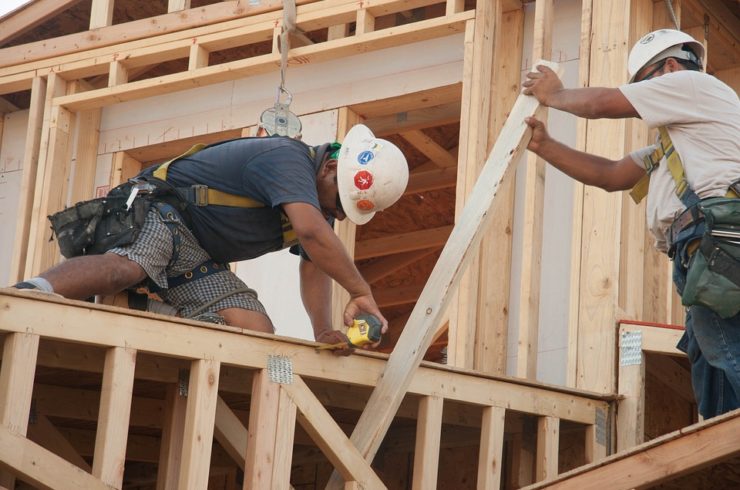Business
How can startup contractors survive a volatile market?
The construction industry continues to grow and thrive, but many small contractors and construction firms are struggling to survive their first few years in business. They face several challenges but they can take steps to ensure their survival, especially in the critical first two years of their business. They can adopt new technology, follow industry trends, track cash flow, among others.

The construction industry has recovered since it took such a blow in the 2008 recession, and it continues to grow and thrive. Despite this growth, many small contractors and construction firms are struggling to survive their first few years in business. What common challenges are these companies facing, and what steps can they take to ensure their survival in the coming years.
1. Adopting new technology
New construction technology is emerging every year, and for contracting startups, adopting this new technology is essential for business survival. Adopting new technology doesn’t need to be expensive or challenging. Start by adopting something small that the company can use to save money or increase productivity. Project management software is a fantastic example of new technology that any company can adopt to improve their workday efficiency.
New, high-tech equipment might be too expensive for startups to consider purchasing. Instead of abandoning the idea of obtaining this machinery, these companies should consider leasing it or renting it with an option to buy later. Doing so will give them the chance to utilize new technology without putting themselves in the red.
2. Following industry trends
New trends, from modular construction to green building materials, are taking the construction industry by storm, and many older companies are slow to adopt these new trends. This tendency creates a unique opportunity for new companies and startups to move into the niches before established companies can manage to do the same.
For new startups that are looking for a way to set themselves apart in a competitive and volatile market, adopting industry trends can be the magic key to staying afloat. Take a look at some of the newest industry practices, and see where they could be applied to the company. Many customers may come to the company looking for a specific trend — especially with the green construction trend gaining traction as customers try to build their eco-friendly dream homes.
3. Tracking cash flow and budgeting
Budgeting isn’t a skill that only individuals need to learn — it’s important for startup contractors too. Setting a construction budget that encompasses the understood and anticipated costs of a project helps project managers keep track of their expenditures and can also keep the project from costing too much and preventing the company from making a profit.
It’s best for businesses to use a 70/30 budget for most projects, with 70 percent spent on hard costs like materials and supplies and 30 percent on soft costs — anything that doesn’t have a fixed cost that might be more difficult to estimate. When the budget is divided into two categories, it becomes easier to make sure that nothing is left out and that there’s always enough funding to cover the entire project.
4. Focusing on client retention
Small businesses need to continually focus on customer retention, especially in their first few years, to ensure the survival of their business. For construction and contracting firms, it’s critical since these companies have no other source of income.
The first step is for project managers and owners to know their customers. From there, offering quality and predictable experiences can help to secure relationships with new and existing clients. These individuals should take the time to use social media and capture feedback in a public venue like a Facebook page or Google reviews. In the internet age, people are more likely to use Yelp to decide which company will get their business than relying on word of mouth.

5. Preventing productivity stagnation
Productivity stagnation is an enormous problem in the construction industry for old and new companies alike. According to the Construction Owners Association of America (COAA), more than half the time spent on a construction project is wasted waiting for materials or equipment to arrive. Other industries have experienced more than a 100 percent increase in labor productivity over the years. Construction hasn’t — in fact, the industry has been stagnating for the last 50 years.
It’s up to project managers to organize everything — from material and equipment deliveries to construction schedules — to prevent productivity stagnation.
6. Surviving to year five
It’s hard for small businesses to survive, especially in the volatile construction market. Between 20 and 30 percent of small businesses fail within their first two years, and only about half reach the five-year mark. For company owners and project managers who are starting a new construction company, the first two years are often the most difficult time. Focusing on things like budgeting, customer retention and preventing productivity stagnation can help ensure a constant influx of income and make it easier for startups to compete with established companies in the ever-changing construction industry.
The construction industry is constantly changing and growing and will continue to do so in the coming years. It’s up to individual company owners to take the steps that will keep them afloat and make it easier for them to compete with the big companies that have already made a name for themselves.
—
DISCLAIMER: This article expresses my own ideas and opinions. Any information I have shared are from sources that I believe to be reliable and accurate. I did not receive any financial compensation for writing this post, nor do I own any shares in any company I’ve mentioned. I encourage any reader to do their own diligent research first before making any investment decisions.

-

 Fintech2 weeks ago
Fintech2 weeks agoItaly Issues First Natively Tokenized Minibond on Public Blockchain
-

 Fintech1 week ago
Fintech1 week agoN26 Hires UBS Executive to Lead Turnaround Amid Regulatory Pressure
-

 Biotech5 days ago
Biotech5 days agoCAR-T Therapies: From Breakthrough Cancer Treatment to Faster, Safer, and More Accessible Immunotherapy
-

 Cannabis2 weeks ago
Cannabis2 weeks agoLuxembourg’s Cannabis Paradox: Legal at Home, Restricted Everywhere Else
![Kevin Harrington - 1.5 Minutes to a Lifetime of Wealth [OTC: RSTN]](https://born2invest.com/wp-content/uploads/2023/12/kevin-harrington-400x240.jpg)
![Kevin Harrington - 1.5 Minutes to a Lifetime of Wealth [OTC: RSTN]](https://born2invest.com/wp-content/uploads/2023/12/kevin-harrington-80x80.jpg)




















